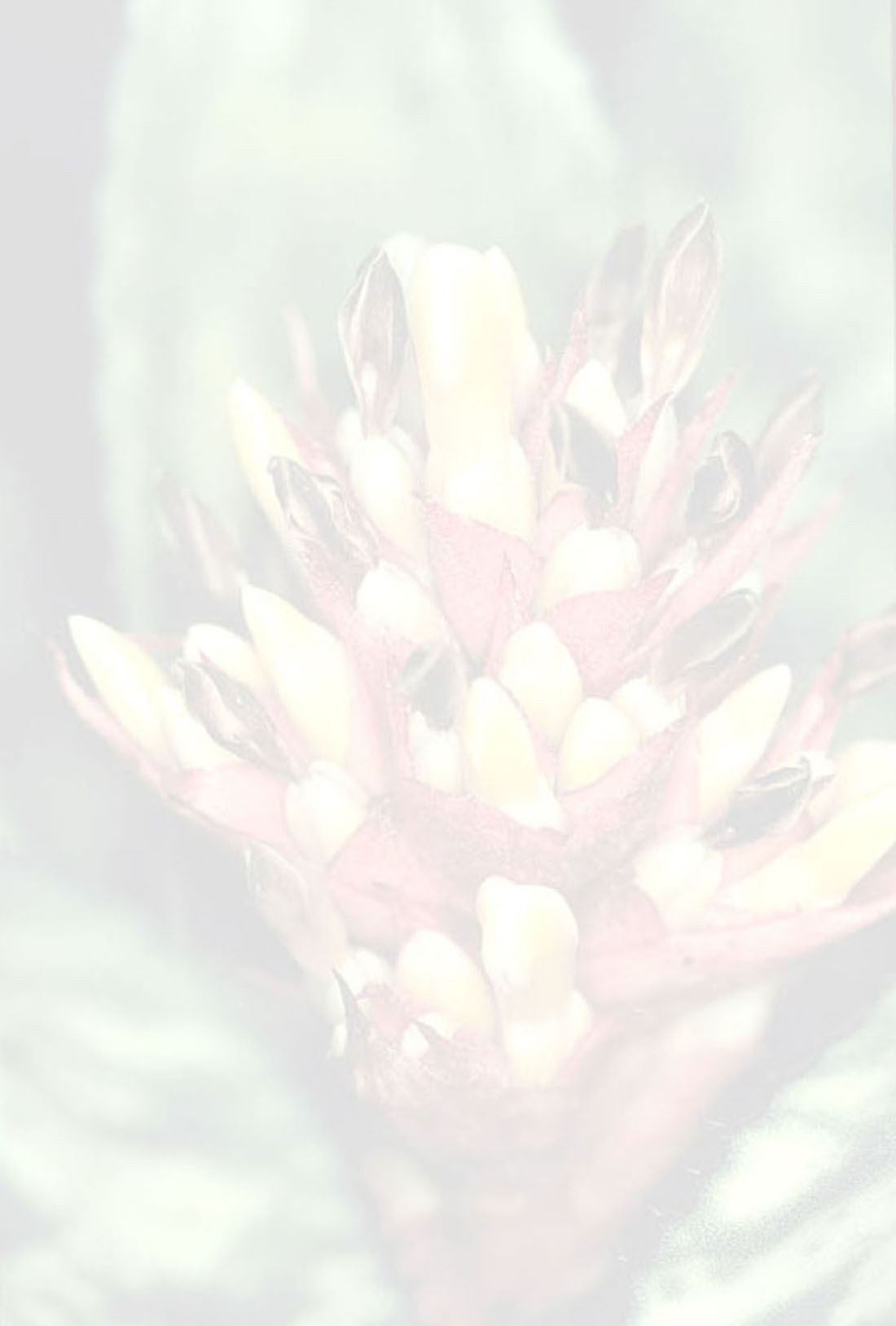Aechmea pineliana (Brongn. ex Planch.) Baker
Literature references:
*move your mouse pointer over the page numbers to see comment
Comments:
- Distribution and habitat
A. pineliana occurs in Minas Gerais, Espirito Santo and Rio de Janeiro. It grows epiphytic or terrestrial in Atlantic rain forest and in sandy coastal plains (restingas )
Notes
First described as Echinostachys pineliana Brong, ex Planch, and later treated as Aechmea pineliana (section Pothuava) by Baker (1879) who proposed the Echinostachys reduction. Mez (1892) treated Echinostachys as a subgenus of Aechmea, which was represented by a group of similar species, such as A. armata Lindm., A. crocophylla E. Morren (both currentJy synonyms of A. pectinata), A. vanhoutteana, A. alopecurus, A. hystrix E. Morren (now A. ornata), A. squarrosa and A. triticina. Subsequently, Mez ( 1896) reduced Echinostachys and included all these species in the subgenus Pothuava, which has persisted since then,
A. pineliana is highly variable in size leading to the description of the A. pineliana var. minuta Foster. Variation in size can appear in the same population, so here A. pineliana is treated in a wide sense. A. pineliana is closely related to A. triticina. None of the descriptions of these two species successfully delineated them. Morphologically, they are very similar in general appearance of the inflorescence, leaf apex and scape bracts, but they differ in the length of the terminal spine of the floral bracts and in the corolla colour, A. pineliana has terminal spines of floral bracts exceeding the calyx length and yellow petals, while A. triticina has terminal spines of floral bracts not exceeding the calyx length and white petals. Thus, based on the delimitation now proposed, it was possible to find some mistakes involving these two species. Pereira (1972) described A. roberto-seidelii, which he found closely related to A. pineliana but differing in flower size and colour (petals white). This author mentioned nothing about affinity of this new species with the little known A. triticina, which has the same flower size and colour. Smith & Downs (1979) treated A. roberto-seidelii like a synonym of A. pineliana var minuta without comment. It is probable that is was based on the similarity of the plant's size. However, the comparison of the holotypes showed that A. roberto-seidelii is a synonym of A. triticina instead of A. pineliana var minuta. (Not generally accepted at 2003 DB) Smith (1955) described a new variety, A. triticina var capensis, which was distinct from the typical in having "apices of the floral bracts exceeding the sepals".
I propose that A. triticina var capensis is a new synonym of A. pineliana; both have apices of the floral bracts extending beyond the sepals and yellow petals. (Generally accepted) —See Wendt 1997 p. 125;245-271

